Back in the Mara for what must be something like my 25-30th trip in 13 years.
I started off with an aerial photographic flight – single engine Cessna with the doors removed on one side – from Nairobi via Lake Natron – most of which lies in Tanzania, before proceeding onto the Mara.
East Africa has been experiencing a fairly severe drought and Lake Natron, which even in normal times is covered by only a few feet of water, was about 80% dry. This meant that Flamingo numbers were well down on normal levels. The first photo shows one of the few areas of water with attendant Lesser Flamingos “grazing” in the shallows.
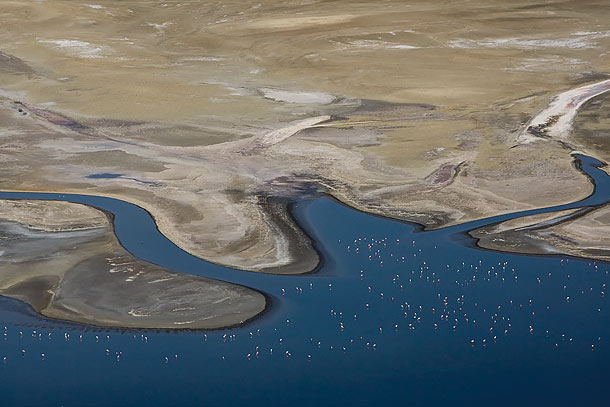
Here is a shot of one of the river systems that feeds the lake and amply illustrates the starkness of the surrounding shore area.
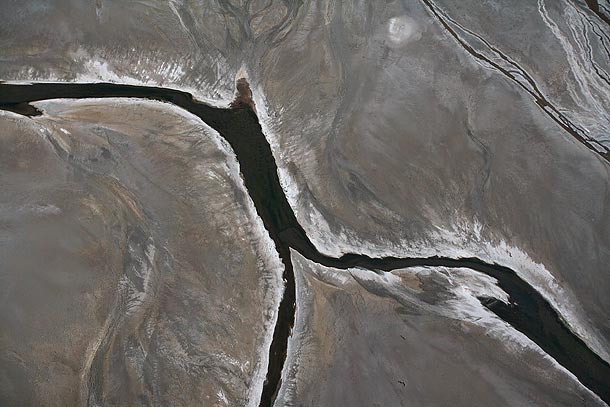
What’s this next picture? An abstract oil painting? To me, this is what it looks like. In fact, the red in the picture comprises an algae bloom (the stuff that flamingos feed on) while the white is made up of sodium deposits. For photography, the best combination occurs, when the lake bed is covered by a thin covering of water. This results in amazing deep red colours. Examples of this can be seen in the “Landscapes” category (sub-category, “Africa”) in the picture gallery of www.wildencounters.net
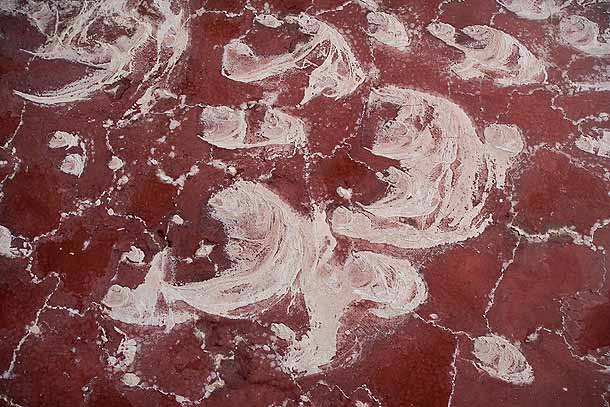
Onto the Mara. As we flew in from the south, I could see a few decent sized herds of Wildebeest but nothing like what one normally witnesses at this time of the year. As it turned out, the drought has certainly effected this year’s migration. The herds arrived earlier than normal into the Mara (early July) and some have moved back into Tanzania already. Still, the migration is a fickle thing and a few days of heavy rain in the Mara could see large numbers return. During my 12 day stay, it was bone dry for the first week but we then had quite heavy rain in the late afternoons for the duration of the trip. It will be interesting to see what the state of the migration is like when I return in late September but as of late August, numbers are well down on normal levels.
Fewer numbers of herbivores meant that the chances of seeing predatory behavior by the big cats were diminished. Another surprise was that the cats had far fewer young than normal (a possible consequence of the drought). Normally, it has been a simple case of finding one of the cat species (cheetahs, lions or leopards) that have young and sticking with them for a good part of the day. While adult cats sleep or rest during the day, cubs are much more likely to be playing or interacting with their family members, hence providing plenty of photo opportunities. In addition, the presence of young cubs typically increases the frequency with which adults will hunt. All in all, photographic opportunities were not as abundant and easy as over the last several migratory seasons.
There were however plenty of male lions around and although I failed to witness any really interesting activity, save for some half-hearted stalking, I made the most of some good lighting conditions to take photos of the lions in their environment.
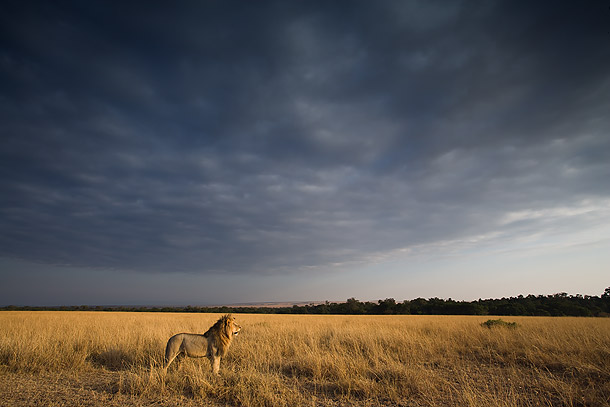
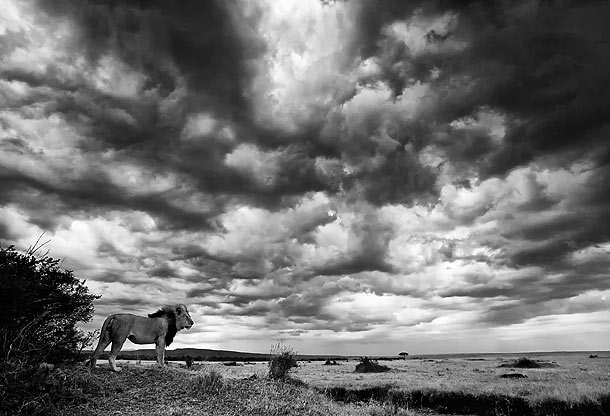
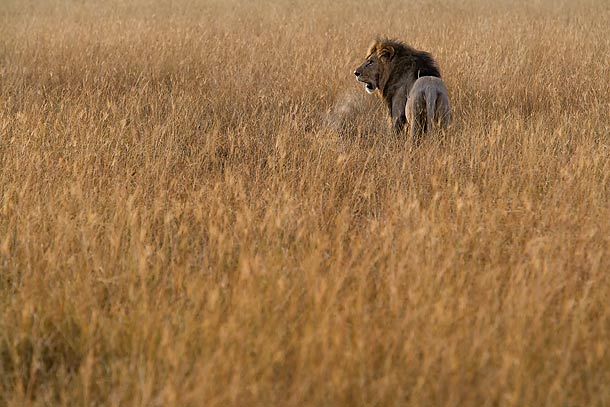
Most visitors put away their camera equipment when it starts raining. Mine immediately comes out. The pro camera bodies and lenses these days are extremely water resistant and when paired with a protective rain cover, there is little danger to one’s equipment.
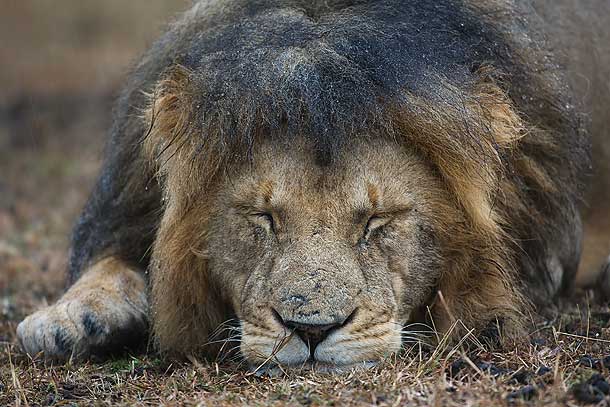
We did find one Lion pride with three young cubs although pictures were difficult due to the long grass and the Croton bushes in which the cubs were hidden. However, one afternoon the adults killed a Zebra in a dry river bed where I was able to get decent views of the cubs cavorting on the Zebra carcass.
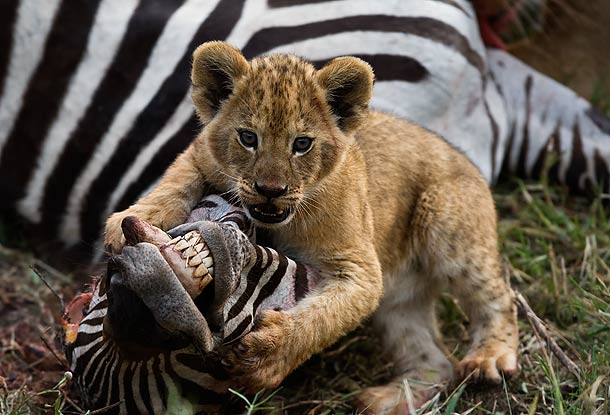
Aside from the Lions, I had a good session with a Spotted Hyena carrying her pups…
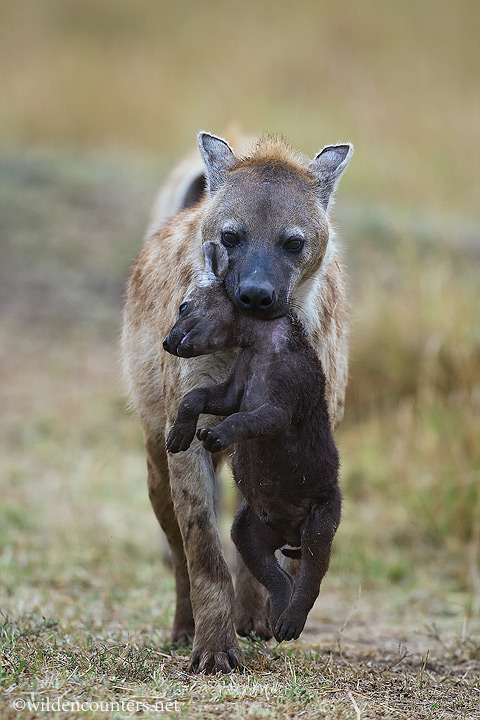
…a young adult Leopard hunting a hare…
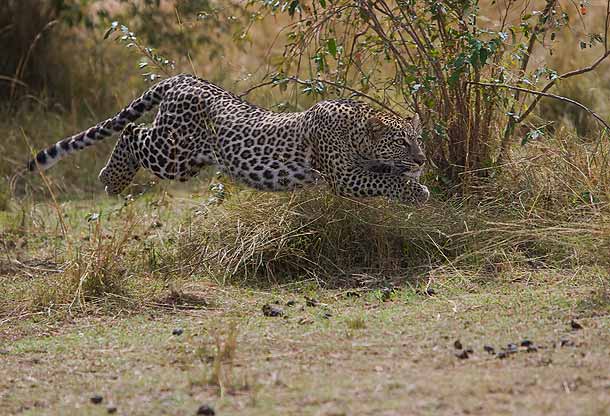
…and a Black-Backed Jackle carrying a Thomson’s Gazelle kill.
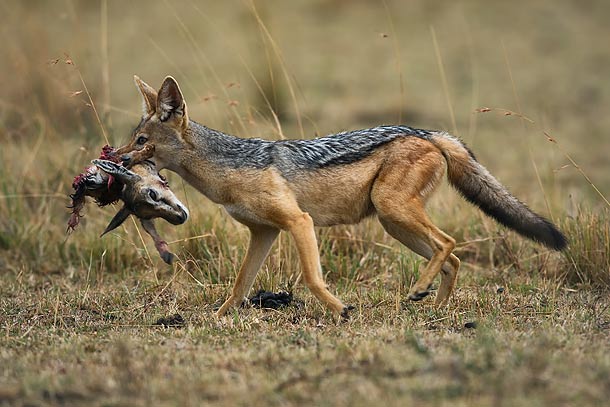
As usual there were plenty of bird photo opportunities. These included an Eastern Pale Chanting Goshawk taking off from a tree…
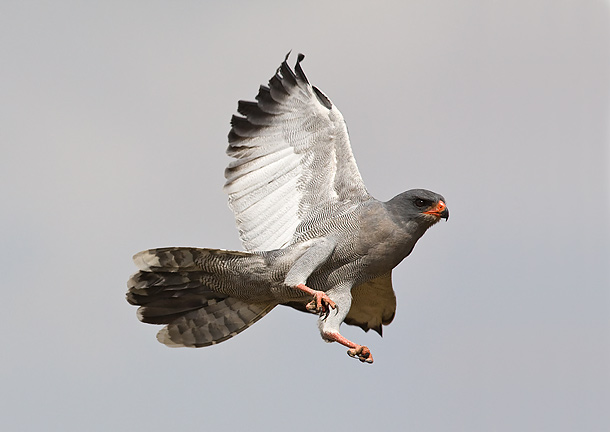
…and a portrait shot of one of my favourites: a Saddle-Bill Stork.
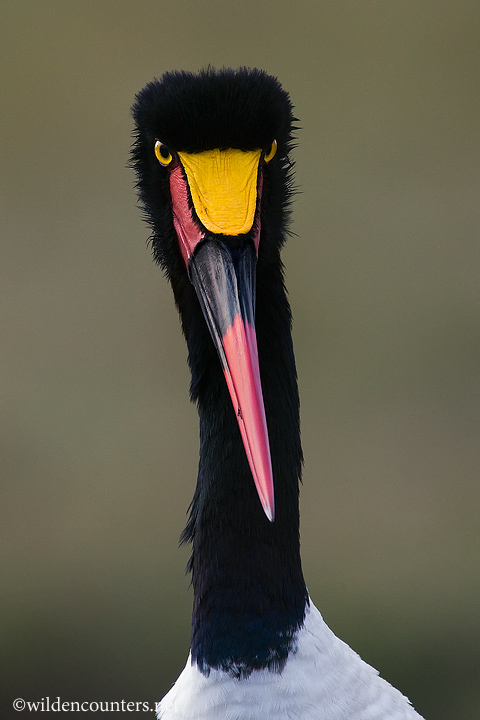
After a day or two, I worked out with my guide that we should spend most of our time at the Mara river. Small herds of Wildebeest and Zebras were crossing the river at well-used crossing points on a fairly regular basis. While the small numbers and low water level meant that the actual crossings were not nearly as spectacular as normal, this was made for by some tremendous croc action.
Normally, the crocs will dispatch of Wildebeest and Zebras crossing the river by pulling them under the water until they drown. With the low water levels however, this was no longer a straight forward option. As a result I witnessed some epic struggles, one of which went on for the better part of 30 minutes.
The Nile Crocodiles that reside in the Mara river are the stuff of nightmares. Some have grown to monster proportions with jaws that can easily crush skulls and bones.
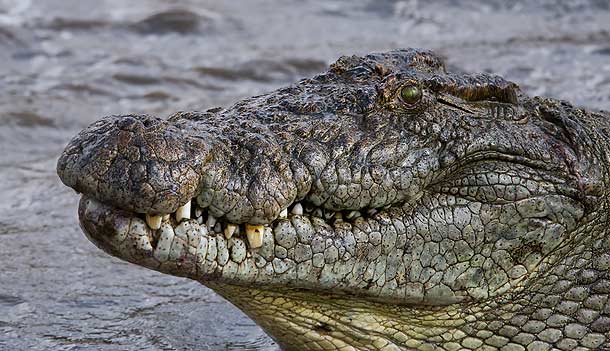
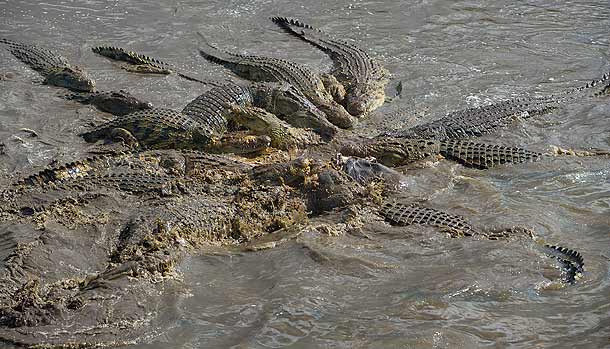
“Pretty” and “beautiful” are not adjectives commonly used to describe crocs but I have to admit to a certain fondness for them and in the early morning light, their golden-yellow scales take on a resplendent sheen.
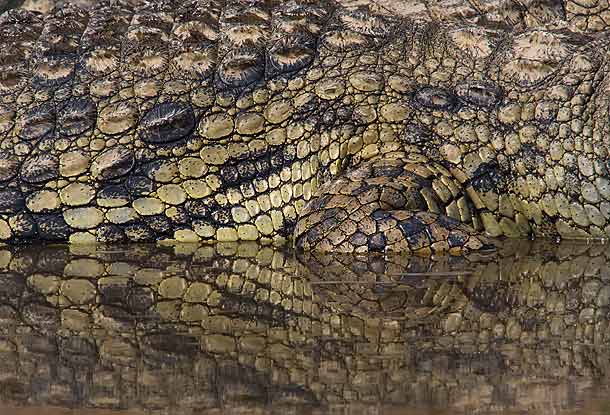
As usual, the build-up to most crossings is a drawn-out affair, with the Wildebeest and Zebras very tentatively approaching the water, usually drinking first and often being spooked by the smallest movement or noise, be it real or imaginary. Their caution is well founded as the following picture illustrates.
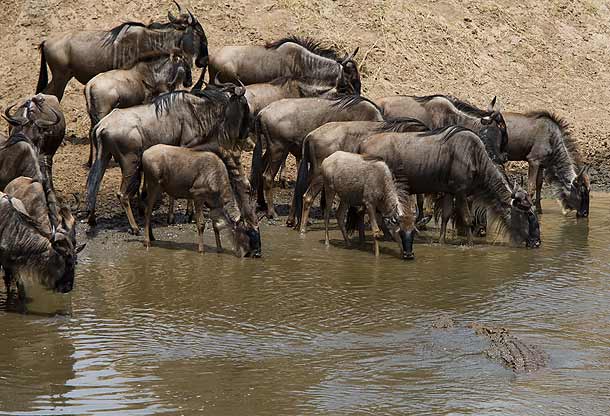
But once one goes, the herd mentality takes over and the others pile in. As the numbers crossing this year at any one time were small, I concentrated my picture taking on individuals rather than going for a wider view.
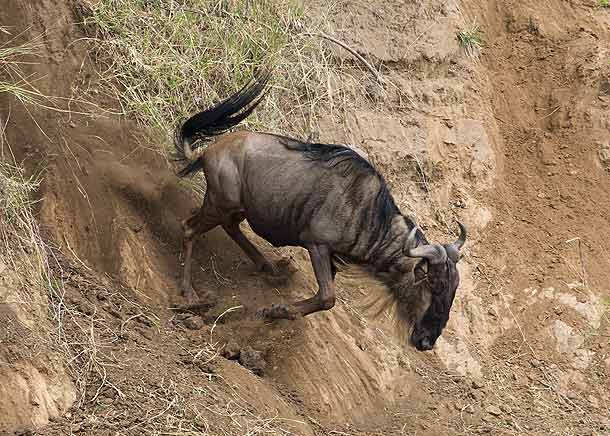
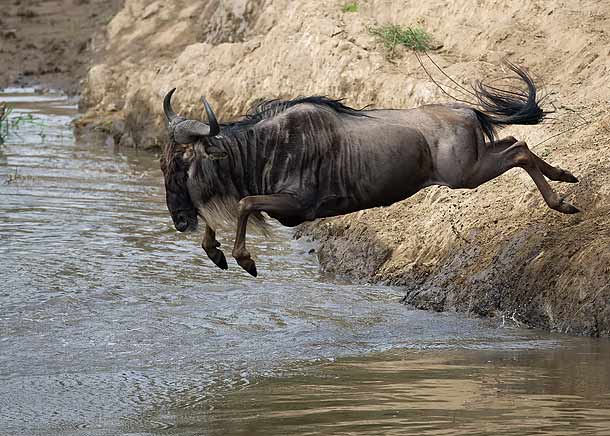
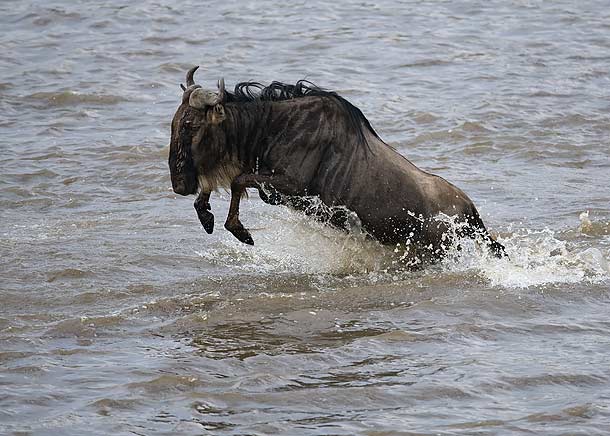
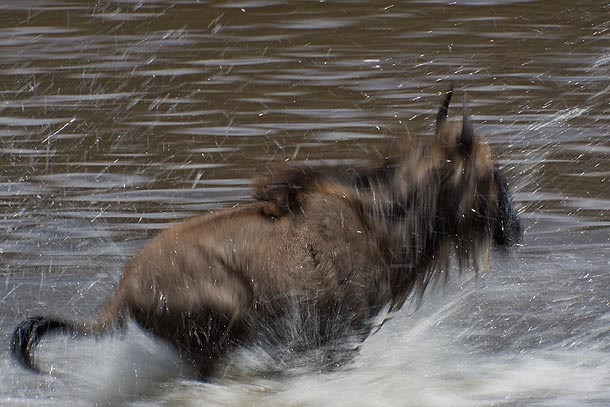
All of the Wildebeest in these pictures made it safely across. Others were not so fortunate…
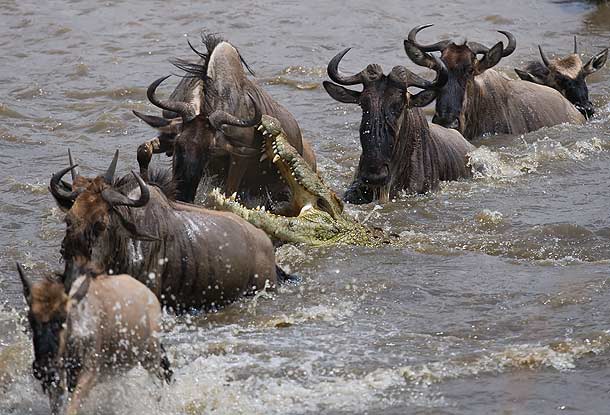
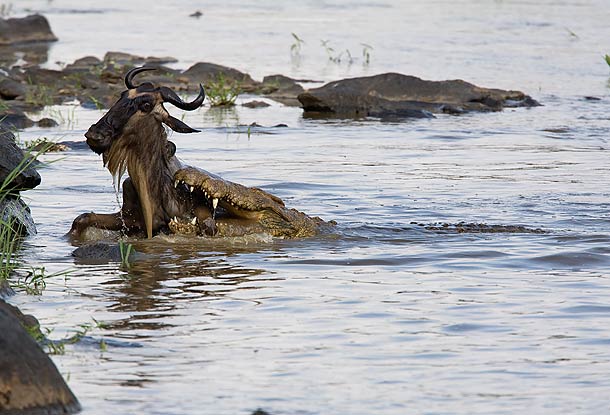
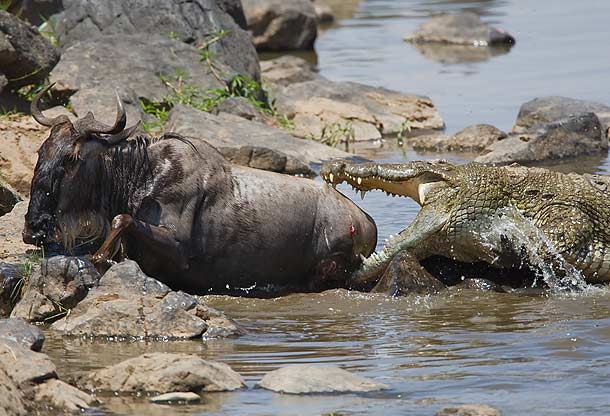
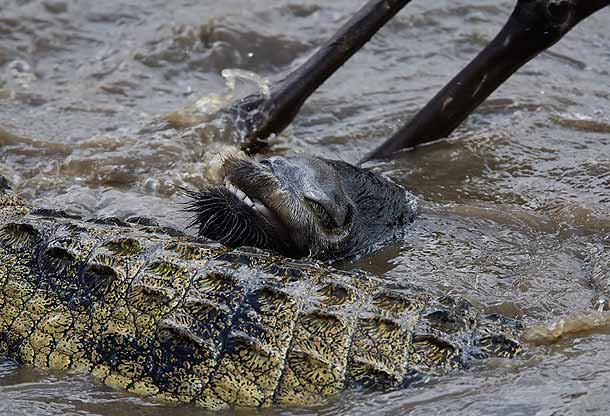
Hopefully, by the end of September, the migration will have returned in force to the Mara and that more of the cats will have young. Olive, the very successful female leopard that occupies a stretch of the Talek river, has recently been seen with two young cubs while a female cheetah with three young cubs has recently moved into a nearby area. So fingers crossed for the end this month.
mohamed mosko
October 4, 2009
very very beautiful i like to go their .
james menjo
January 7, 2010
the pictures are fantastic. i really like them
kp
June 17, 2011
great work
Danielle
April 27, 2012
Amazing photos !